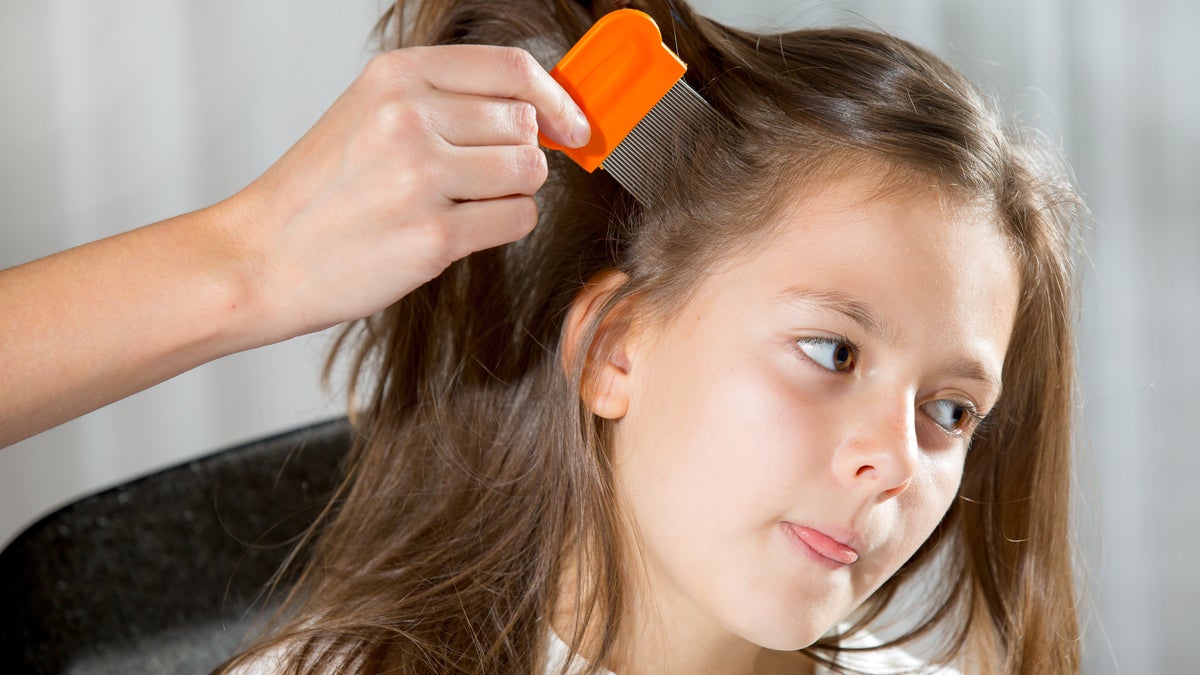Experts say schools overreact to head lice
Listen
(Photo via ShutterStock)
Recent research found that head lice have mutated genetically to become resistant to most over-the-counter treatments. This is likely a result of overuse, because the same treatments having been applied for decades.
The news is creating some panic around an issue that already gives many people the creeps. Some parents are calling for stricter policies in schools — but health care providers advise everyone to stay calm.
Schools are often seen as the place where lice infestations get their start — but Beth Mattey, president of the National Association of School Nurses, said that’s not the case.
“It’s a community issue, it’s not a school issue,” explained Mattey, who works in the Brandywine School District in Wilmington, Delaware.
A school nurse for 20 years, Mattey said school usually just happens to be the place where lice are detected, after a teacher sends a head-scratching kid to the nurse’s office.
People also tend to vastly overestimate how quickly and easily lice spread.
“Lice really aren’t going anywhere, they have a nice comfortable area with food on a head, and they are not jumping, or leaping or going anywhere else.”
Lice also can’t survive very long when not on a person’s head.
In Plymouth Meeting, Pennsylvania, Ilene Steinberg was working on 9-year-old Alyssa McCabe, combing out lice and nits. Steinberg has made getting rid of lice her profession — she makes house calls to treat people for her business, The Center for Lice Control.
“Over 95 percent of lice infestations come from head to head contact, very little comes from sharing brushes, hats and helmets,” she explained.
The nits or eggs of lice are glued to the hair shaft and don’t move. So, pregnant females on the loose — not a likely scenario — are the only real cause for concern.
Steinberg also checks family members. On this visit, she asked Alyssa about friends she’s had head-to-head contact with.
“Me and my friend yesterday, we were doing our cheer, and we have to make a heart with our hands and put our heads together, so she could have gotten it,” said Alyssa.
Steinberg’s husband and business partner, Ed, advised Alyssa’s mom to call the friend’s mom, to check for lice.
Steinberg has developed her own formula to kill lice. Made with olive oil and a silicone among other things, it suffocates the lice. She then combs out the nits and follows up with another treatment in six days, just in case more lice have hatched.
Clean-up involves washing the bedding, cleaning brushes, and vacuuming.
Mattey said most schools still overreact to lice and are not looking at the most current science.
“We have been saying for several years that children do not need to go home, but we haven’t gotten the message out,” Mattey said. “The newest study from CDC that came out showed that 80 percent of the schools they surveyed still exclude kids for head lice.”
Sending kids home once lice have been detected doesn’t cut down on spreading the problem, she said, but it means missed days in school and work days lost for parents.
Mattey and Steinberg both advise parents to check their kids for lice about once a week.
WHYY is your source for fact-based, in-depth journalism and information. As a nonprofit organization, we rely on financial support from readers like you. Please give today.


